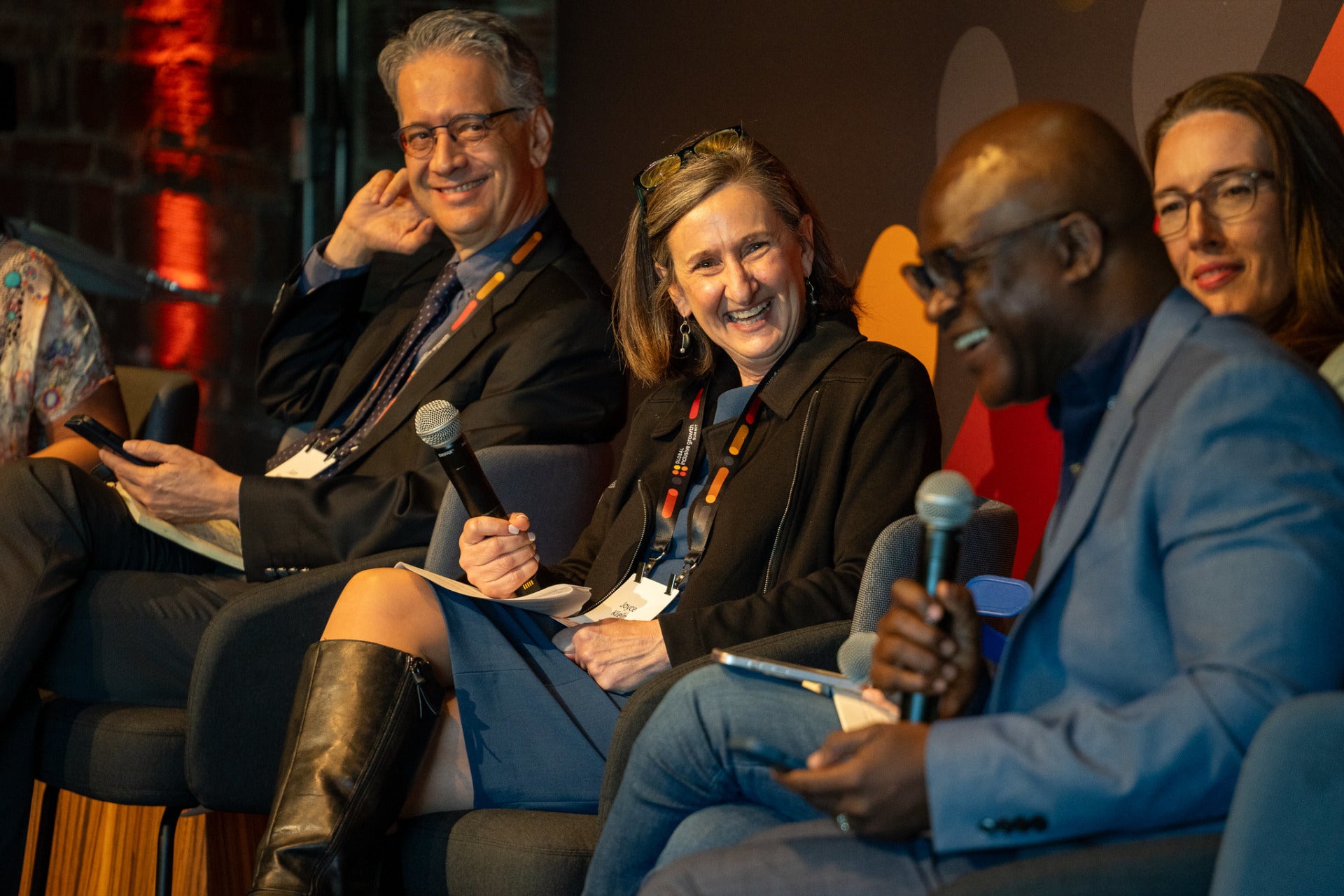Molly Hemstreet is the founder and general manager of Opportunity Threads. She’ll be discussing issues in rural communities at the Aspen Ideas Festival.
What led you to start Opportunity Threads?
I grew up and still live in Western North Carolina — the heart of the southern textile and furniture industries. I have seen the arc of our communities’ economic life go from booming with manufacturing, to massive lay-offs, to an emergent manufacturing renaissance. This renaissance is marked by technological innovation, customization on the plant floor, and a renewed commitment to environmental sustainability. However, living in North Carolina I also watched the systematic dismantling of the rights of workers to organize. Any renaissance in manufacturing must include a worker-centric approach. Giving workers more equitable and democratic participation in the workplace not only helps solve challenges of workforce development it also roots wealth in our communities and reverses a trend of generational wealth extraction. I started Opportunity Threads to learn firsthand about manufacturing and the ability of workers to self-manage small- to mid-sized manufacturing facilities. It is a proof-of-concept idea where we are building dignity and hope for traditionally marginalized people while contributing a small yet impactful model of workplace democracy and economic equity on the manufacturing frontlines.
How can the model of worker-ownership make an impact in a community like yours?
Worker-ownership is just a piece to a larger puzzle of economic sustainability and autonomy for people and communities. Worker-ownership is a tool, a means to an end — the end being economic security, resiliency, and self-determination. When workers have a sense of purpose and economic safety (or agency) they often move beyond their workplace walls to advocate for broader community change. I have seen this in our own plant where workers go from surviving on payday lending to establishing credit, owning a home, owning a businesses, and taking time off to volunteer at their children’s school and in the community. It is important to know that our worker-owned plant is the core partner of a flexible manufacturing network. We are one of 18 textile related manufacturers across our rural region representing over 200 workers with a larger network of 40 plants and 1,100 workers. This network, The Carolina Textile District, allows us to work together to solve industry-related problems and build voice for workers. Our regional economic enclave of democratically run plants and collaborative, amplified through an industry-specific network, is creating a self-determined future for our communities.
How does your work intersect with the debate over immigration?
What I love about my community is its diversity. We hear it again and again but it continues to be true — our country was founded on immigration and the entrepreneurial spirit of people working hard for a better life. The first workers that wanted to be part of our worker-owned textile plant in Morganton were Guatemalan Mayan immigrants. (See the book The Maya of Morganton. ) They were willing to take on the risk of participating in a start-up company and also had the textile skill (many of our workers come from long family traditions of working in textiles) to be competitive in a razor-thin margin industry like textile production. My colleagues are among many immigrant workers leading the frontlines of forward-thinking labor rights, especially in the worker-ownership movement. Their own personal lives and the lives of their families are intertwined in the increasingly heated debate of who is allowed within the borders of the US and who is not. But it is in part these immigrant workers that are helping drive the resurgence of manufacturing across regions like rural North Carolina. When I advocate for immigration reform to our legislators it is most often other plant owners that accompany me. The fair, equitable treatment of immigrant workers is deeply tied to the ability of manufacturing to remake itself.
How does your work help promote understanding between native and immigrant Americans in your community?
It is through our flexible manufacturing network and a deep connection to our supply chain that we are able to build bridges between native and immigrant American workers. To reinvigorate and create a sustainable economic enclave takes everyone at all levels, from the worker on the plant floor to the machine shop providing parts to the research and development technicians testing the latest developments in fiber technology. When workers at all levels are educated about the interconnectedness of their roles and work side by side in a manufacturing process a genuine appreciation develops. The history of the Civil Rights Movement showed us that it was the plant floor and the union shop where desegregation first started. Workplaces and people working together in production can still be an equalizing place if we strive for it to be so.
What do you wish people outside the region knew about rural parts of the country like Appalachia?
I want people to know the rich diversity of Appalachia. I want people to know we are equipped to solve our own challenges and that we can hold our ability to build economic self-sufficiency in balance with the beautiful green spaces that we deeply love. Like many parts of the rural south we have a history of struggle. We don’t want this history to end in negative stereotypes that often accompany an Appalachian story, weighing us down in trite, anachronistic ways. Struggle usually accompanies great resilience. When resilience is tied to love of place and the work that flows from that place, people can move towards economic creativity. It is with this foundation of place, equitable economic tools, and a diversity which calls Appalachia home that we are building sustainable, economic resiliency.
What reforms do you think are necessary to promote equity in the labor market?
The most important reform must start in our own minds. First we must overcome our own negative, internalized image of being manufacturing workers. The working class needs to redefine its own pride which is rooted in place and equity and not isolationism and xenophobia. We have raised a generation to do anything but manufacturing. Interestingly that is where many of the good jobs still are. Secondly we must find ways of organizing a new brand of labor movement. The growth of manufacturing is in shops of five to 50 people — the micro-factory. These shops don’t lend themselves as well to unionization but they do lend themselves to more equitable forms of ownership, flexible manufacturing networks, and cooperation. If our regional shops and factories can be autonomous yet strategically linked, competitive in the marketplace while still giving agency and voice to workers, cutting edge while rooted in environmental sustainability — we may have a shot at building an economy which lifts us all.
The views and opinions of the author are her own and do not necessarily reflect those of the Aspen Institute.


